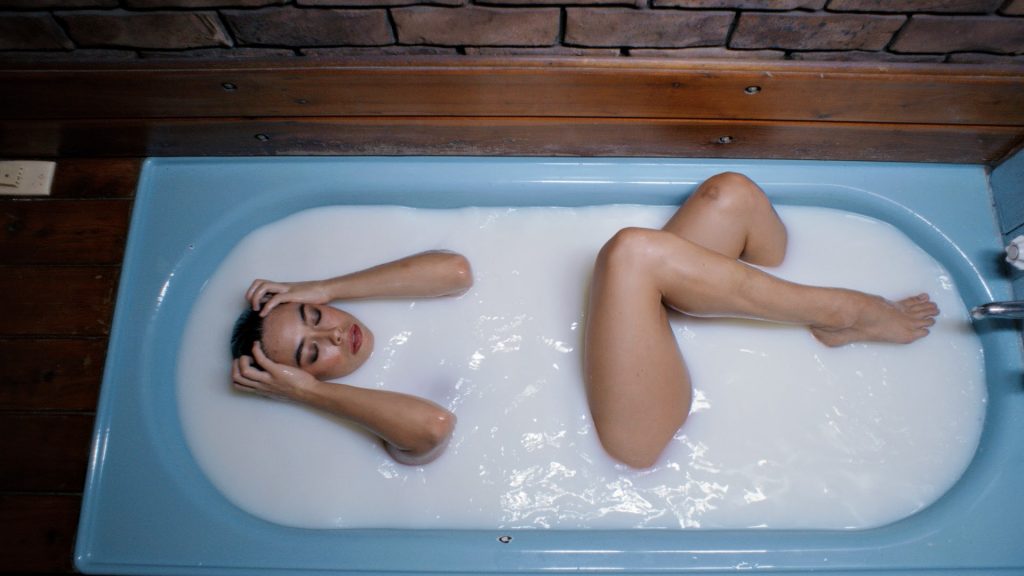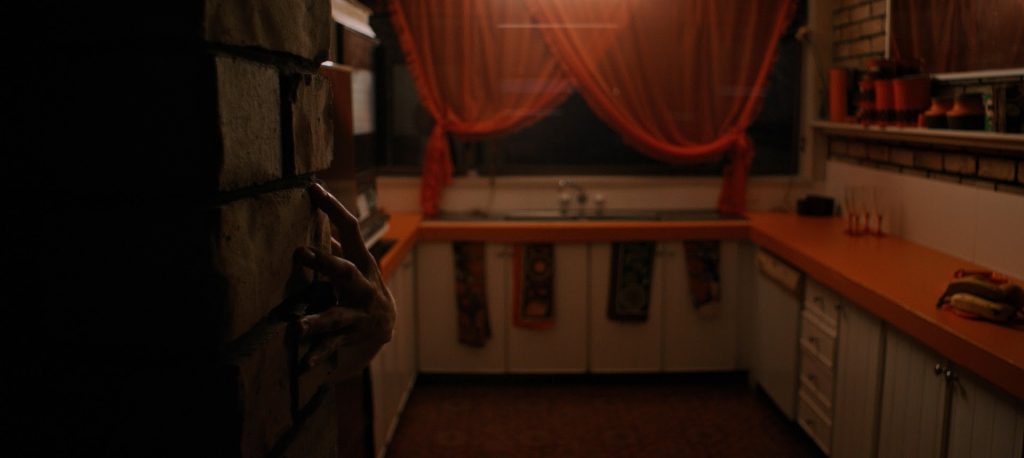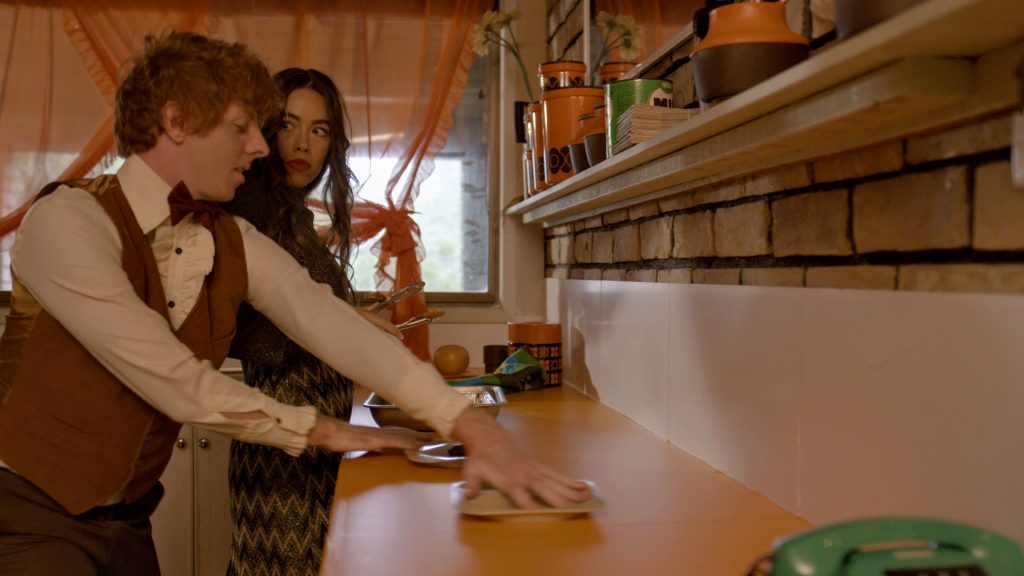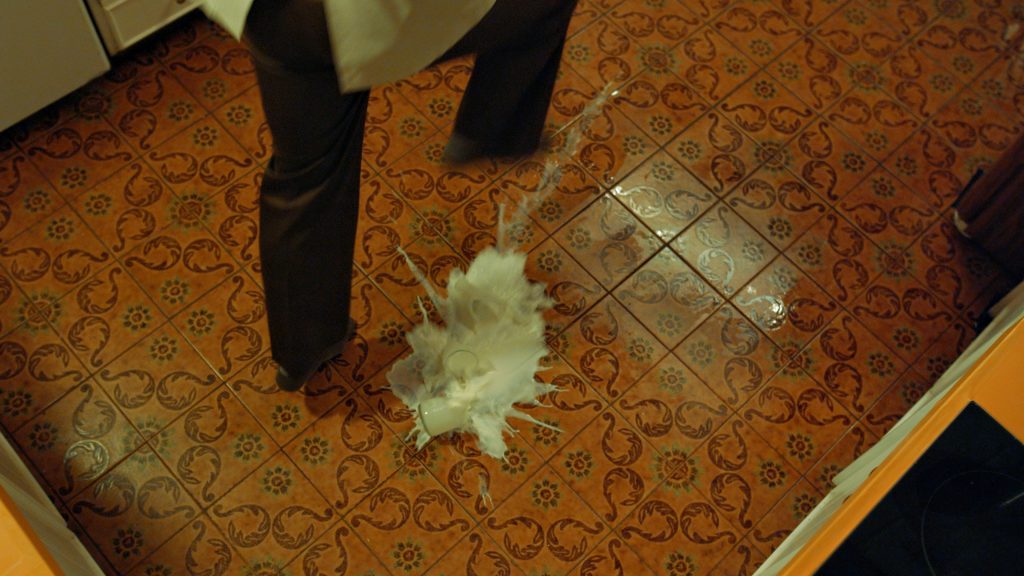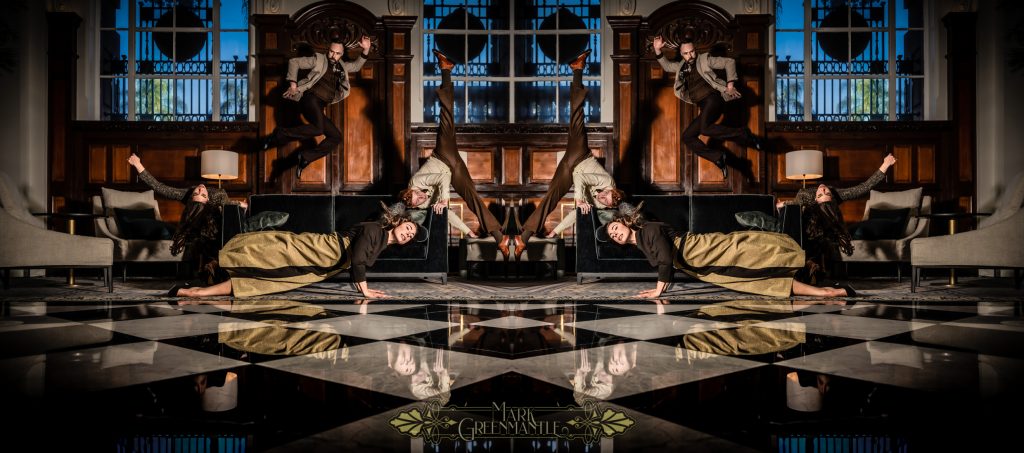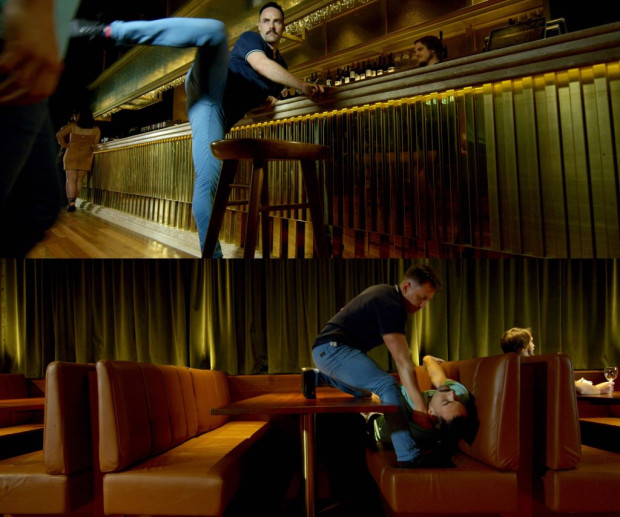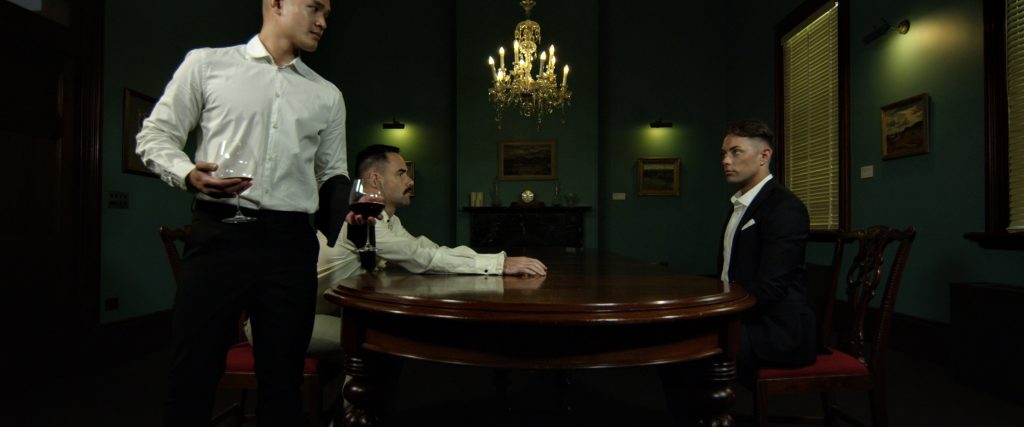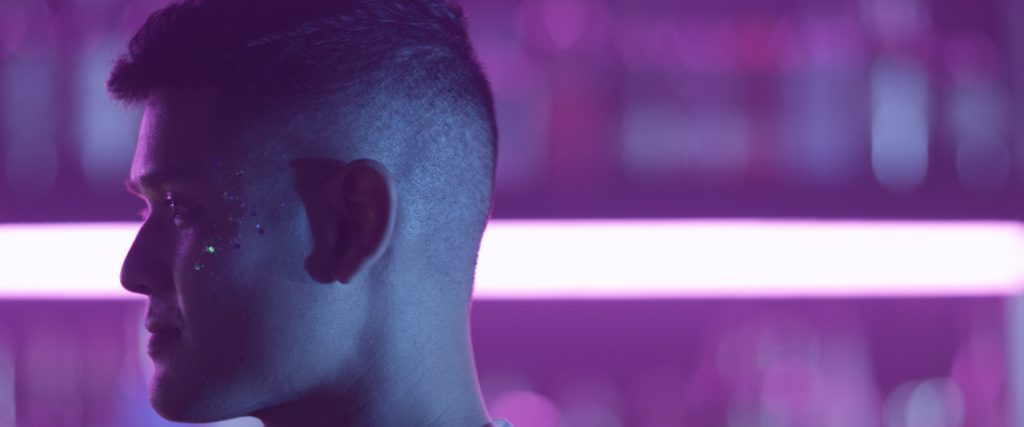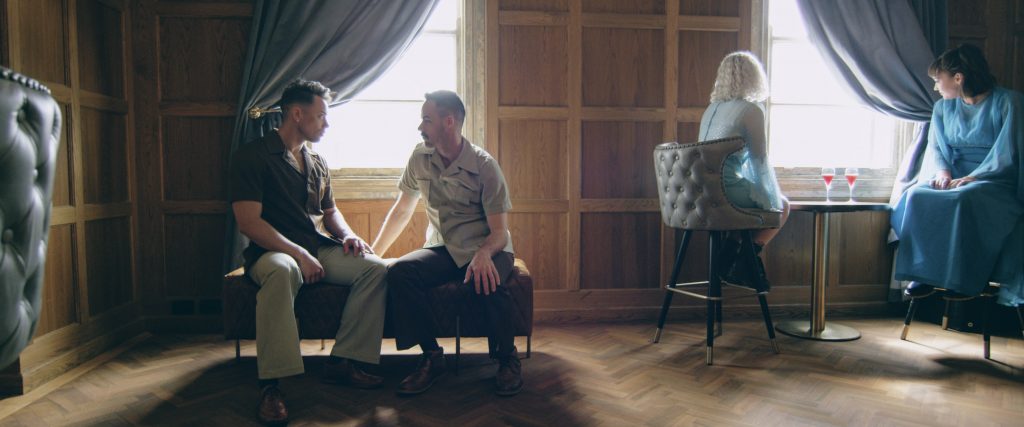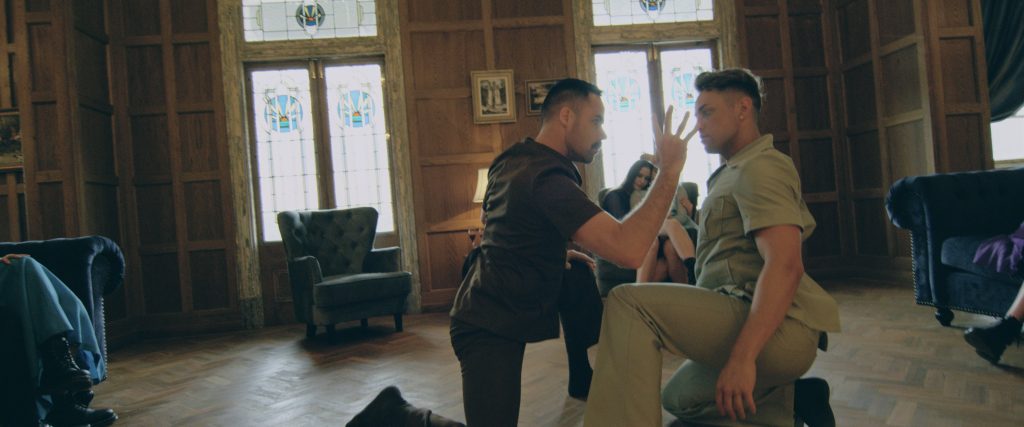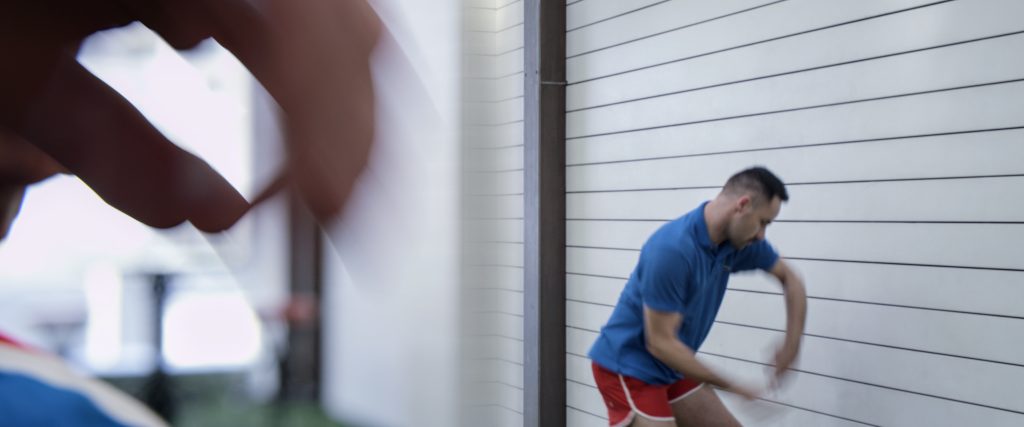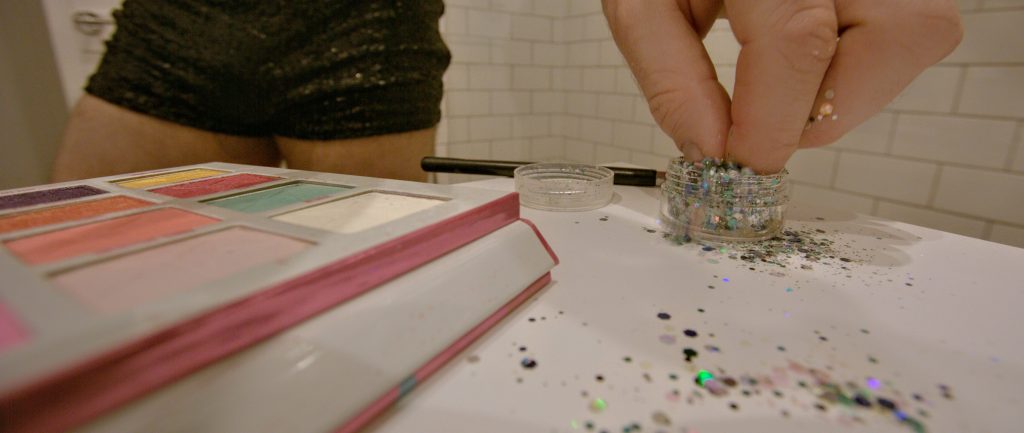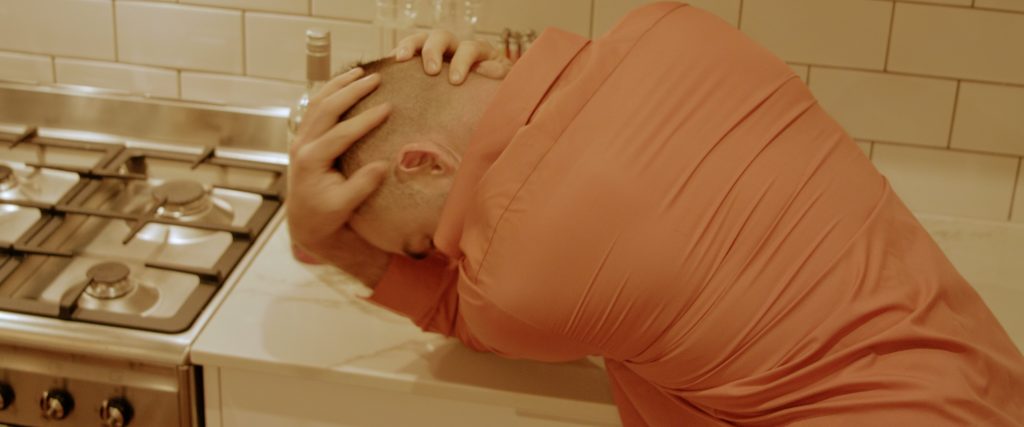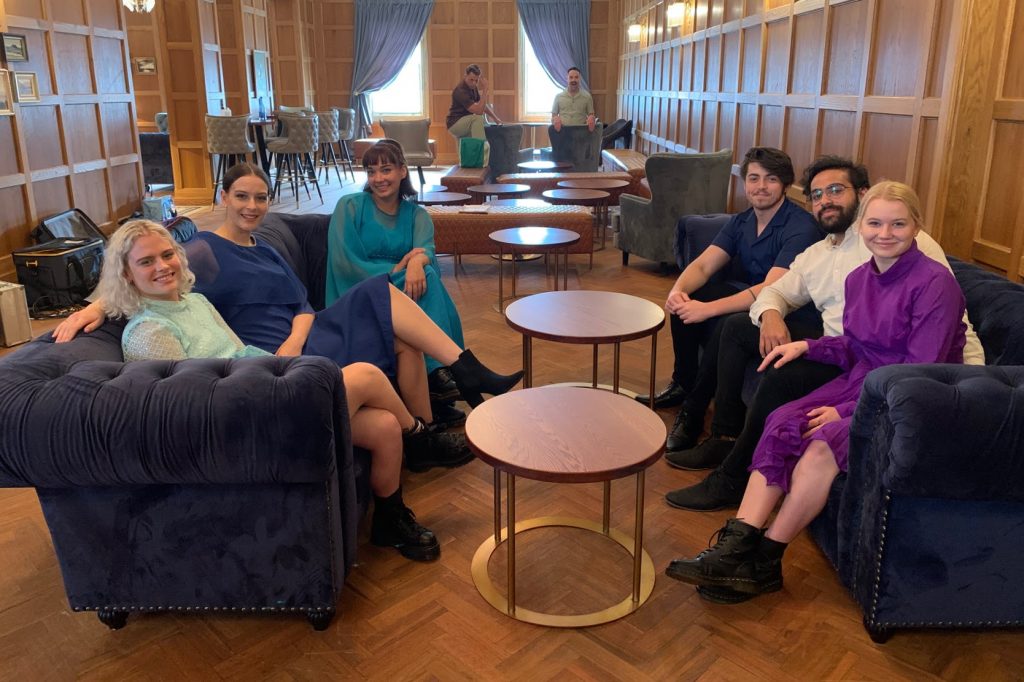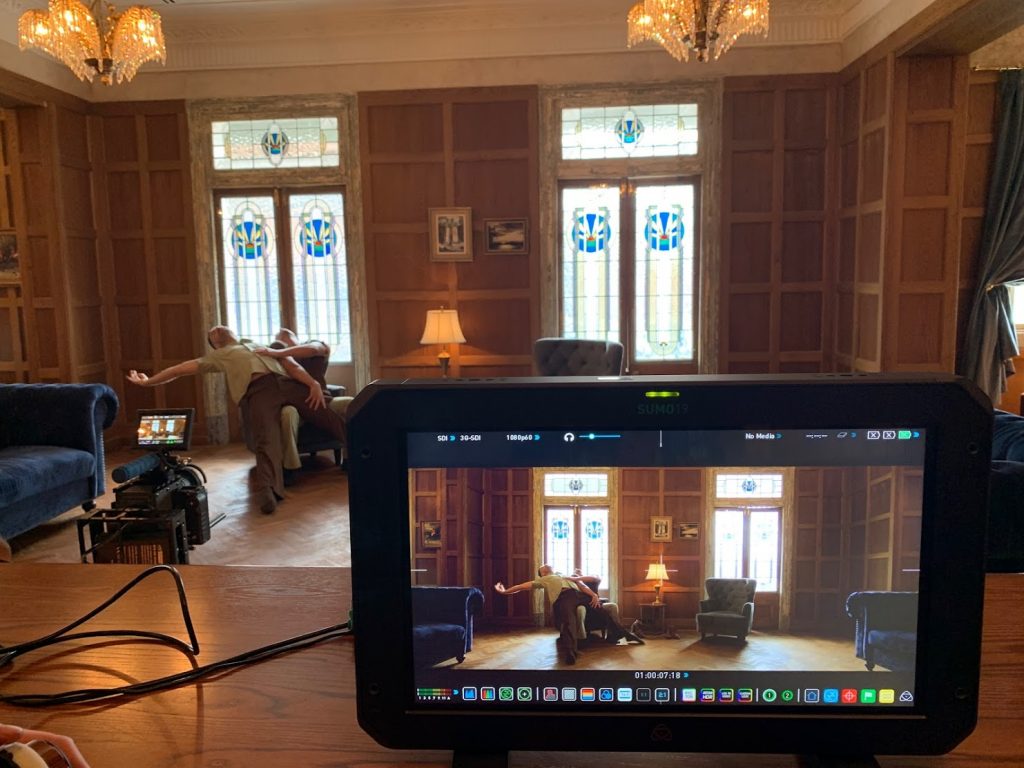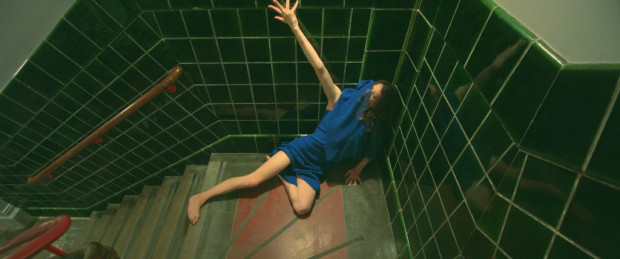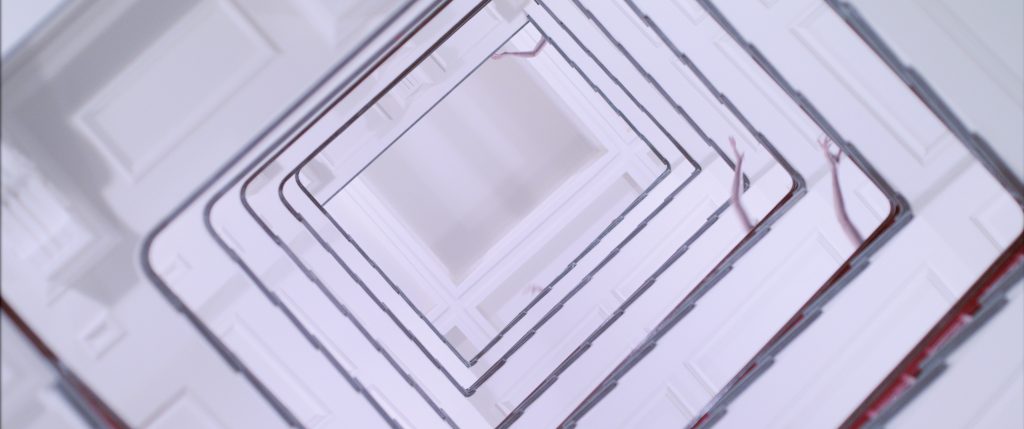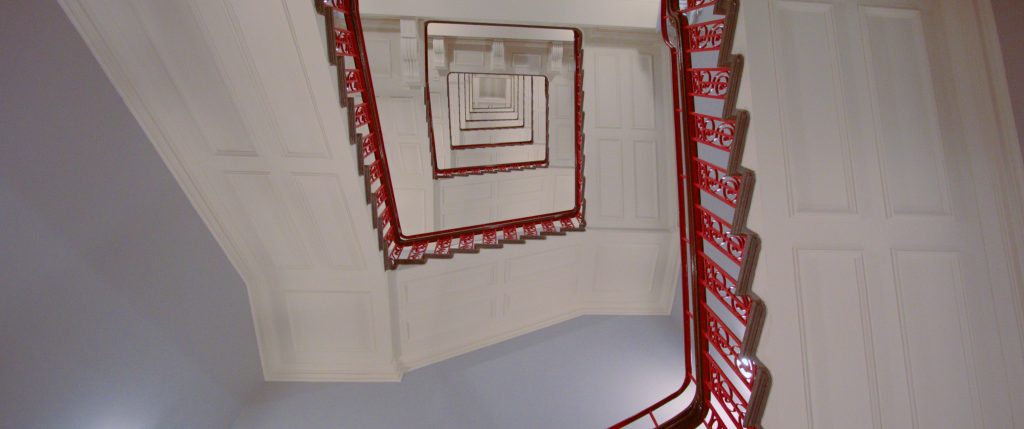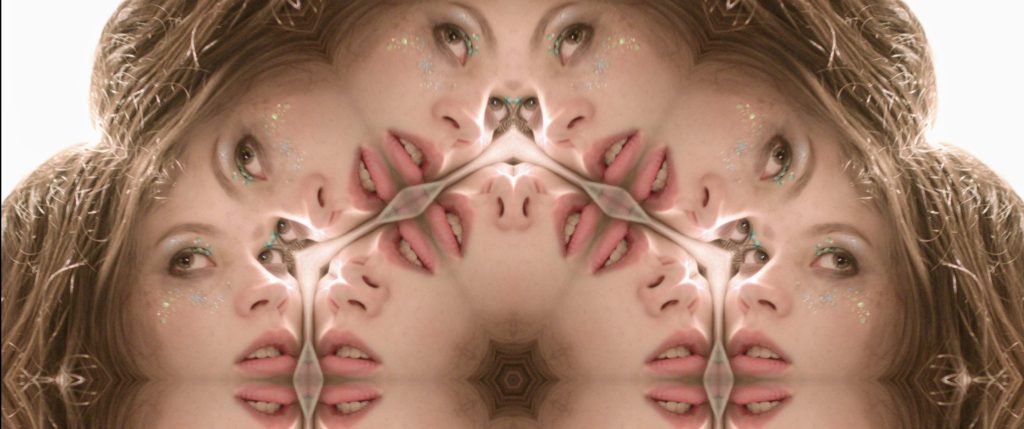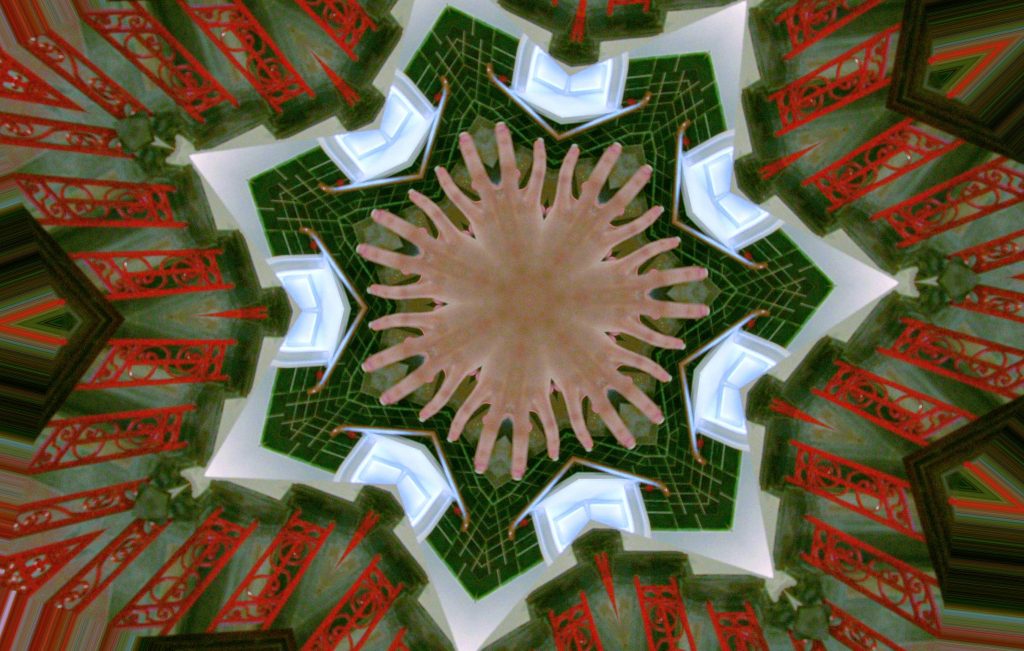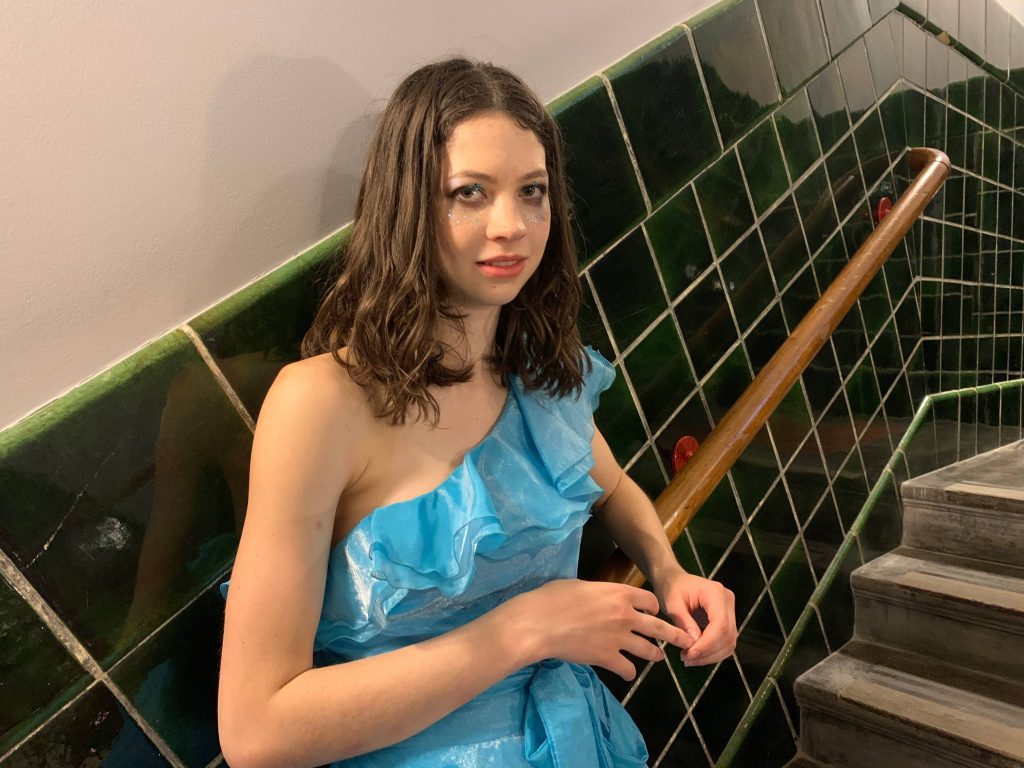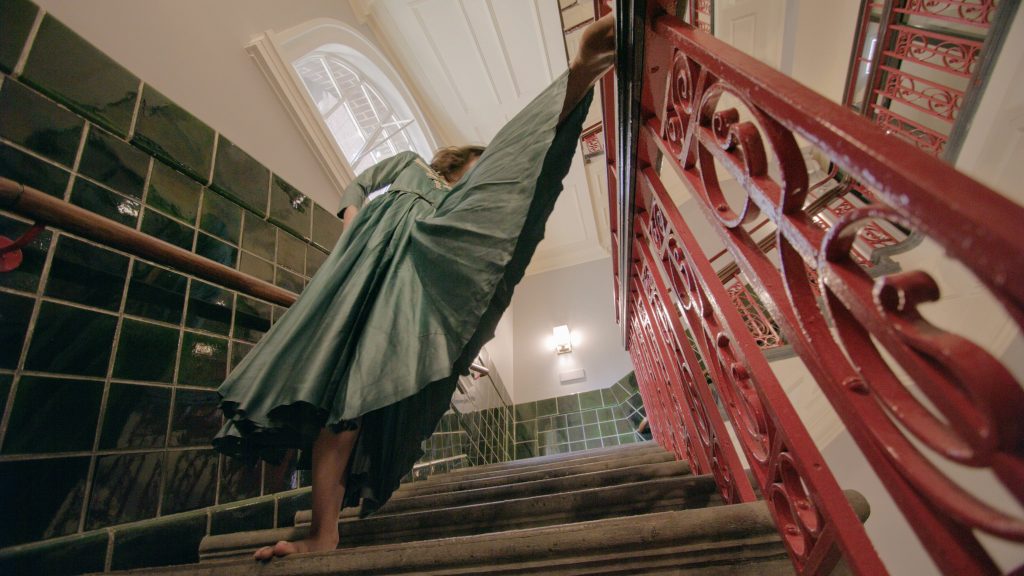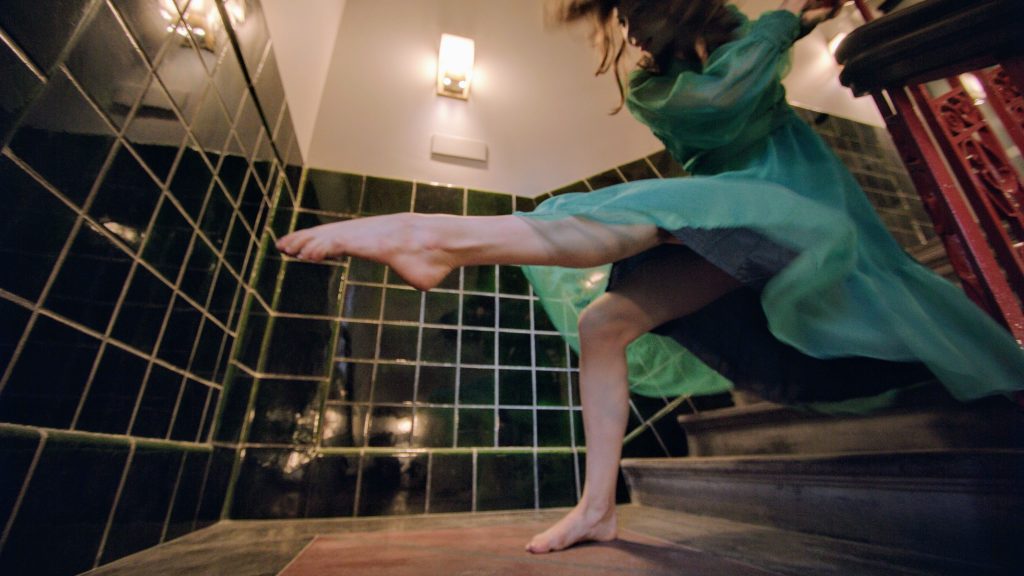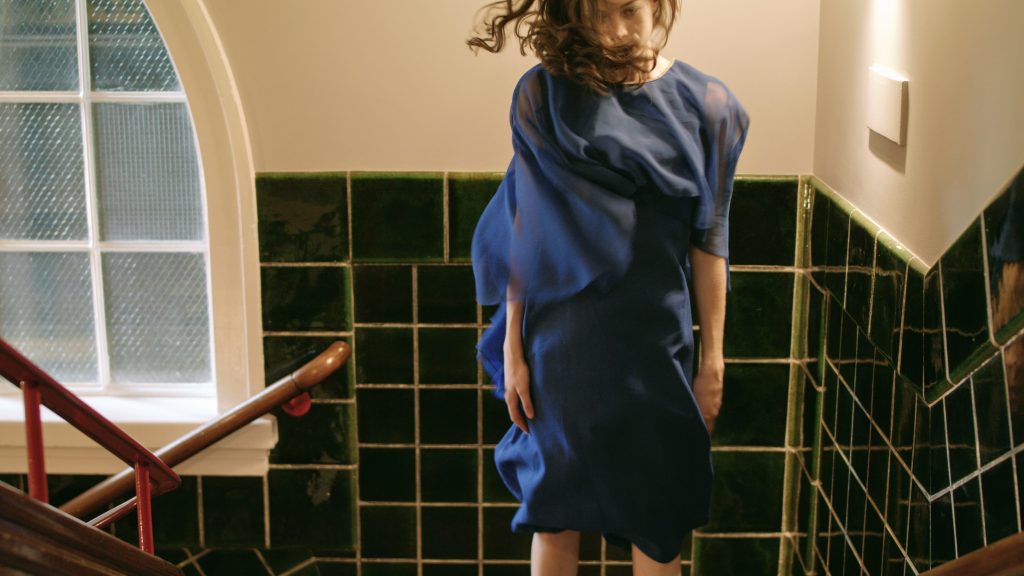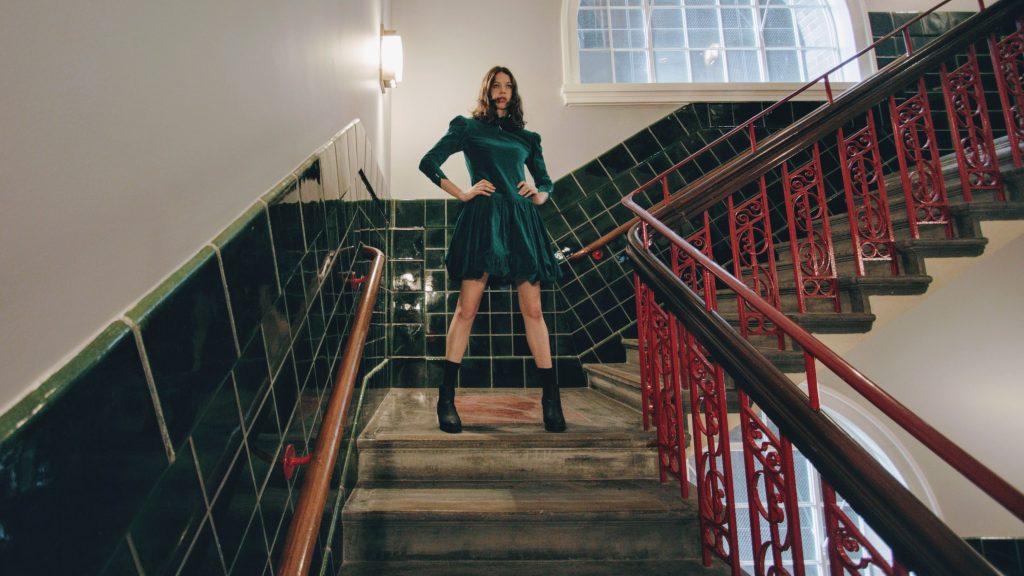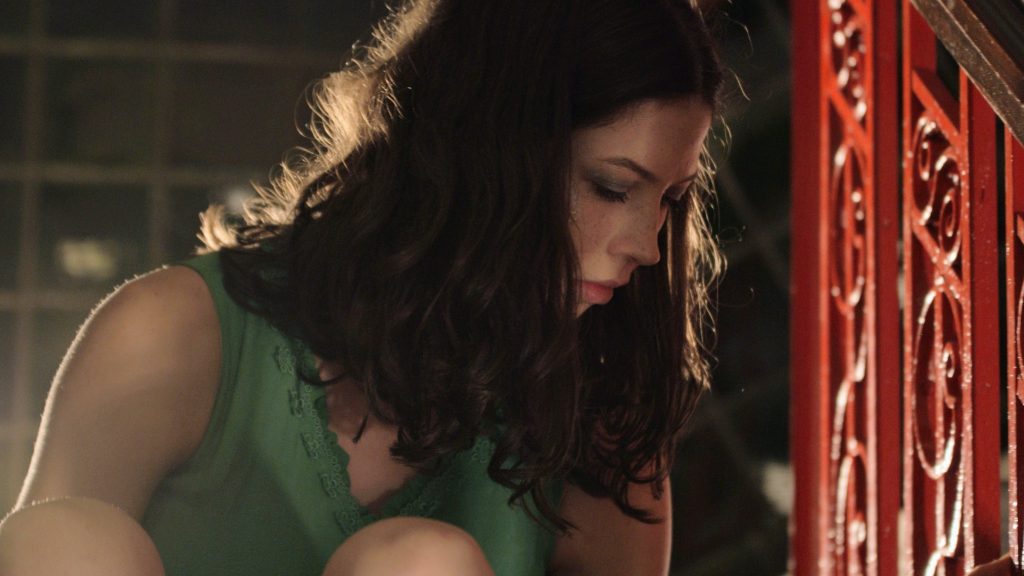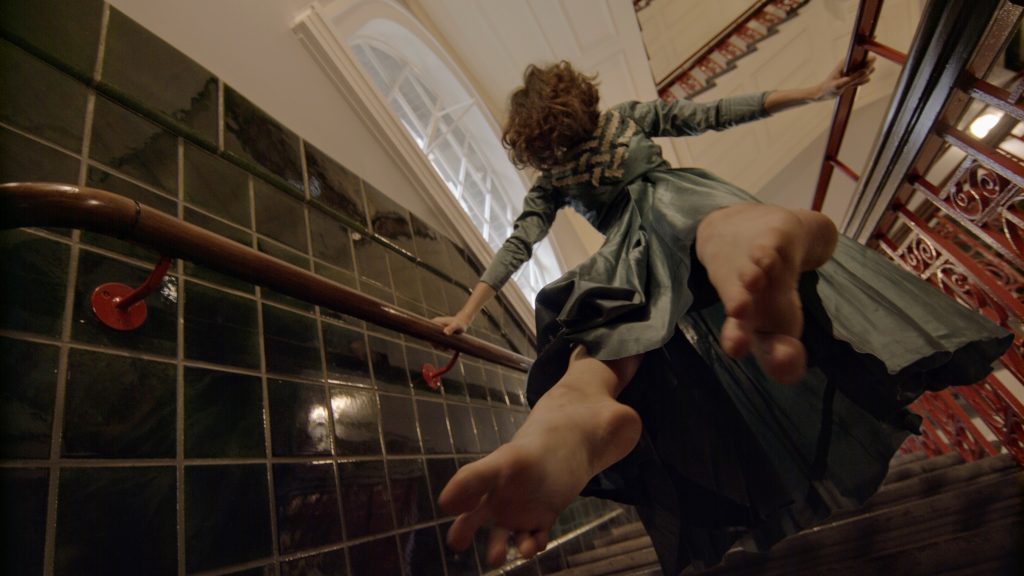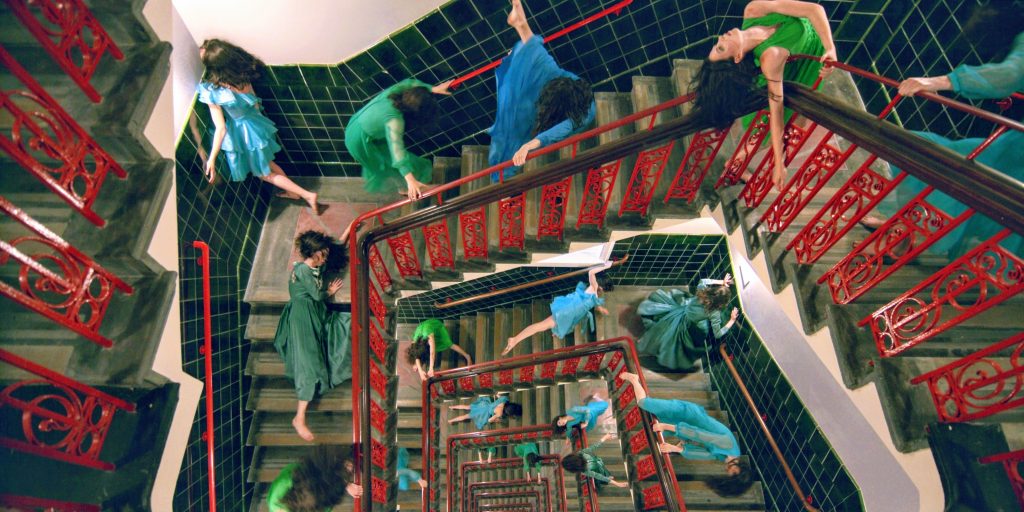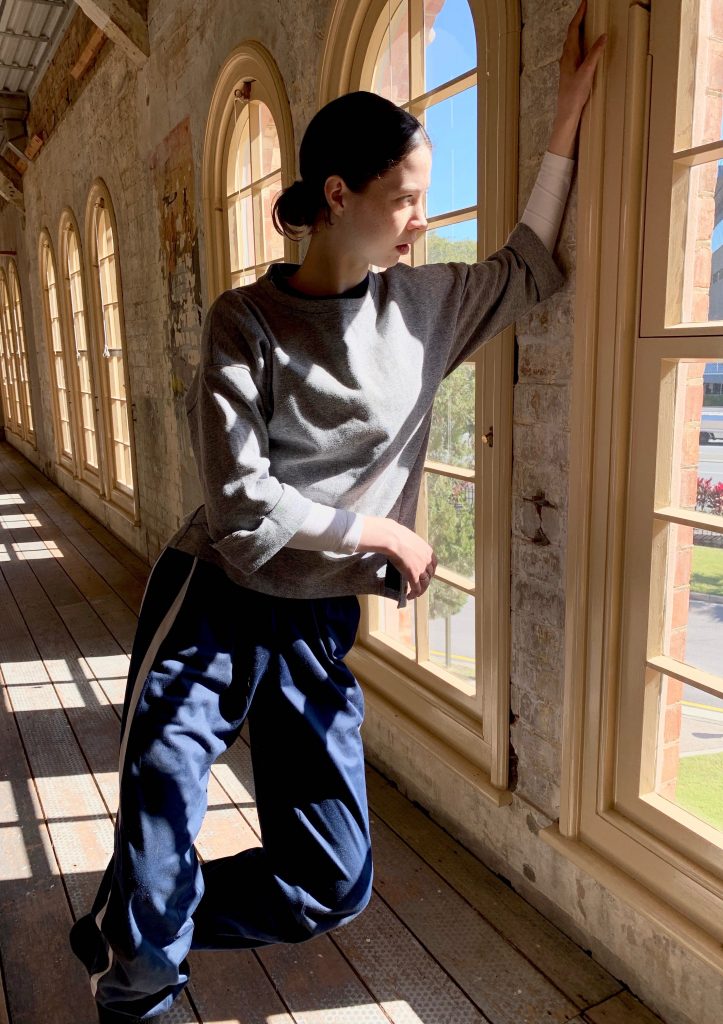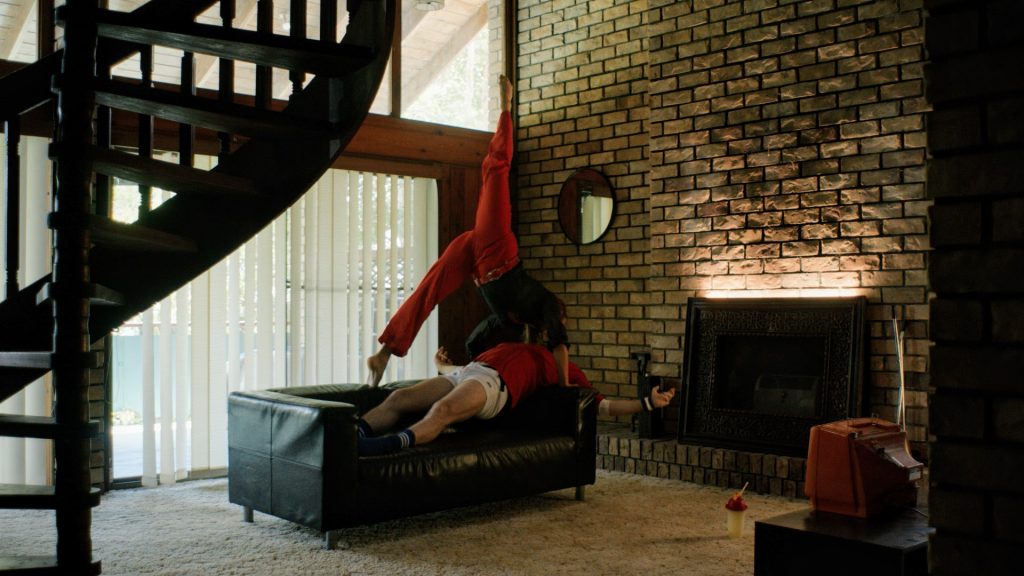
Following filming Permutations in January, I spent the next month cutting footage. While I was happy with it, making four x 30 minute films was ambitious and I could identify some gaps in the story. It probably should have been a five day shoot rather than four and it was amazing that we managed to get all the footage we did in four days.
Below are some stills from the footage:

Fortunately, the location, dancers and team were available for the day except for cinematographer Kevin Holloway who was on a job in Canberra. Thankfully, Saroj Kumar Chauhan, who shot Love Song and Void, was available and willing to take on the task.
However, the weekend I picked for the pick-up shots was the weekend of the 26th of February when Brisbane flooded. In the lead up to filming while rehearsing and setting up, two of the key team members were cut off in the floods, one of the dancers had to walk through flood water to get to the set (because she could not drive through it), Mill St studios was going under water, and I lost thousands of dollars of show sets and props in my shipping container. The house we were filming at began to leak in multiple places, and some of the dancers were possibly not going to be able to get home.
For the first time I began to question if it was worth persevering. I thought the stresses of COVID during the initial shots was extreme, however in the years of making work I’ve never known such a stressful series of events that just continued to unfold as it did this particular weekend. However, I think I can say we got the shots, mostly due to the amazing team who all helped out significantly and were incredibly supportive through all the dramas.

After bumping everything out it slowly began to dawn on me that the Brisbane Powerhouse had flooded and that where the projectors were being hired from (at Southbank) had flooded severely. Despite feeling like I had got all the shots and beaten COVID and the floods, there came the ‘sinking’ feeling that I would need to postpone the season.
The flood levels at the Brisbane Powerhouse nearly reached levels similar to in 2011. Some say it was higher. Below are some stills from the Brisbane Powerhouse in 2011 and 2022 (see photographer credits attached).
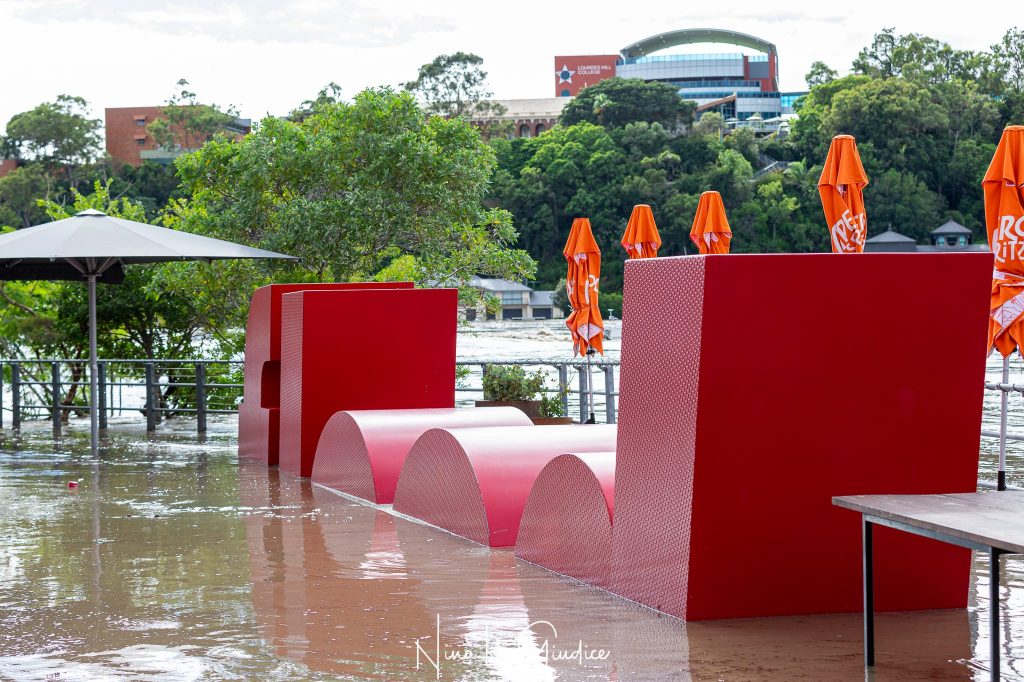


Fortunately, Permutations has been postponed until June 2022. I will need to print new flyers and posters, but that is a small price to pay.
https://brisbanepowerhouse.org/whats-on/event/permutations/
Wednesday 15 – Saturday 18 June 2022
TICKETS ARE ON SALE!





